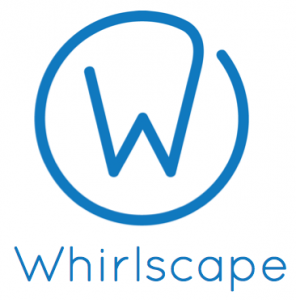There’s been lots of activity in MI’s portfolio this week (and it’s only Wednesday). Read down for what you need to know about Whirlscape, Crowdmark, OtoSim, and ApneaDx.
 Whirlscape launches Google Glass demo video
Whirlscape launches Google Glass demo video
Whirlscape’s Minuum keyboard nabbed a four-star review from CNET’s editors only days before announcing their technology is now available for Google Glass. Watch the UTEST graduate‘s newest demo video.
Reaction coverage: BNN, the Telegraph (U.K.), WPRO (radio), CNET, Mashable, TechCrunch, Mobile Syrup and Android Central, among various other tech blogs.
 Crowdmark named “Most Innovative” at SIIA conference
Crowdmark named “Most Innovative” at SIIA conference
The Education Division of the Software & Information Industry Association (SIIA) showcased some of the newest and most innovative products in the education technology market, and recognized the best among them as part of the Innovation Incubator program at the 13th annual Education Industry Summit, the leading conference for the K-12 and postsecondary education technology market, held May 12-14 at the Palace Hotel in San Francisco.
From their blog:
Crowdmark was named Most Innovative among more than 50 applicants, who were assessed for the Innovation Incubator program on a broad range of criteria. They were judged by both industry leaders and educators in classrooms around the country. Ten participants and one alternate were selected as finalists for the program and the winners were judged by the ed tech leaders at the Ed Industry Summit.
“Crowdmark is very pleased to have been selected to participate in the SIIA Innovation Incubator program,” said CEO James Colliander. “We look forward to engaging with Education Industry Summit participants.”
Crowdmark, a UTEST graduate, is an online grading platform that enables educators to evaluate assessments more effectively than ever before. Created by Colliander, a professor of Mathematics at the University of Toronto, Crowdmark tackles the “logistical nightmare” of grading over 5,000 mathematics exams with a team of 100 graders. The software enables educators to grade a variety of assessment types, including handwritten assessments, securely in a web browser.
 Minister of Research and Innovation names MaRS Innovation, ApneaDx and OtoSim Ontario innovation success stories
Minister of Research and Innovation names MaRS Innovation, ApneaDx and OtoSim Ontario innovation success stories
In an article titled, “Driving The Innovation Agenda In Life Sciences: The Case Of Ontario, Canada,” for LifeScience Leader, MaRS Innovation, ApneaDx and OtoSim were identified as key Ontario innovation success stories by Reza Moridi, Minister of Research and Innovation.
Here’s an excerpt from the article:
Another example of Ontario’s industry collaboration is MaRS Innovation, a highly specialized commercialization hub based in Toronto. MaRS Innovation was designed to accelerate the path to market for great research ideas. At the time of its inception, MaRS Innovation was completely unprecedented and spoke to the readiness of the academic, healthcare, and research communities in Ontario to unleash the benefits of clustering. This willingness to experiment has enabled MaRS Innovation to bundle research assets together, from both a scientific and business perspective, while keeping the individual integrity of the intellectual property intact.
. . .
Beyond the desire to improve productivity, a more tangible and immediate benefit of innovation is the ability to solve challenges in healthcare. Both practitioners and policy makers are looking for new technologies to help solve critical, worldwide healthcare challenges. Rising healthcare costs are one of the most critical issues. Many jurisdictions are implementing programs directed toward gaining efficiencies and constraining cost escalation. Ontario is no different. Many Ontario-based start-ups are focused on developing portable, affordable diagnostic devices designed to keep healthcare costs down.
A few of these promising innovations include ApneaDx Inc., an at-home sleep monitoring system, and Otosim, a medical training simulator that dramatically improves diagnostic accuracy rates.
Prior to the introduction of ApneaDx in 2012, spending a night in a sleep lab (polysomnography) was the goldstandard for diagnosing sleep apnea. ApneaDx addresses the market need for a clinical-quality sleep apnea monitoring system that can be easily used by patients at home. ApneaDx provides sleep-lab-quality data with minimal inconvenience (e.g. no wires, bulky equipment, cumbersome setup, etc.). The device will cost a fraction of the price of a sleep lab visit or other home monitoring systems. ApneaDx obtained EXCITE premarket evaluation in 2013 and has successfully raised $500,000 in seed funding from MaRS Innovation, the Ontario Brain Institute, and Johnson & Johnson.
For years, general practitioners and pediatricians have used an otoscope to screen for illness in the outer and middle ear. However, diagnostic accuracy with this tool is typically less than 50 percent. Enter OtoSim. The OtoSim system is for training medical students and involves a small simulator unit with an opening that resembles a life-sized human ear canal. The ear form has a realistic feel and shape. The student uses a traditional otoscope to look inside the unit where images of ear canals and tympanic membranes (ear drums) are displayed. The instructor’s laptop or desktop computer, which is connected to the OtoSim unit via a USB cable, holds a library with hundreds of images of common ear pathologies. The key to OtoSim’s training success is that it enables the instructor and medical student to simultaneously review the same images. The instructor monitors what the student is seeing and is able to provide specific directions and feedback.
In the less than two years since OtoSim was launched, hospitals and medical schools in more than a dozen countries have snapped up these training units. OtoSim’s rapid worldwide acceptance can be traced back to investment and support from MaRS Innovation.
To learn more about these and other start-up companies or licenseable technologies, view MaRS Innovation’s Portfolio.
By Elizabeth Monier-Williams, director of marketing and communications

